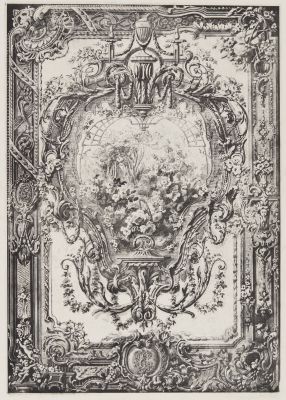
Title
Reproduction d’un dessin industriel Pour le concours du duc de LuynesArtist
Guichard, Édouard (French, 1815-1822)Date
1855 caProcess
Photogravure (heliogravure)Atelier
Charles NègreImage Size
33 x 22.7 cmSheet Size
48 x 37 cm
From the time photography was invented, there was an acknowledged need for an easier way of producing high quality reproductions of works of art, original works or popular views to illustrate books, which up to then required the making of steel engravings, each of which could take up to a year to produce. Industrial design was no exception. Printing the photograph using a traditional ink press was perceived as the solution and to that end the Duc de Luynes in 1856 initiated a competition for the best method of photomechanical printing and a second prize for the best method for making pigment-based photographic prints permanent.
One of the most talented early experimenters was the painter and photographer Charles Nègre who took up the methods originated by Niepce and his cousin, and elaborated them by introducing an electrolytic step, plating the partly developed steel plate with gold to protect the half tones, then aquatinting it and etching it in nitric acid. He received a French patent in 1856 and was a finalist in the Duc de Luynes competition.
As the competition was intended to support industrial applications of photography, many of the samples of industrial design that would be extremely difficult to reproduce using traditional engraving or lithography. This heliogravure is a test submitted by Nègre. We are fortunate enough to have the test in chine colle as well making for an interesting comparison of fidelity and nuance in the earliest stages of photogravure’s evolution.
Guichard is the author of several works of industrial deign and was the former president and founder of the Union centrale des beaux-arts appliqués à l’industrie.
